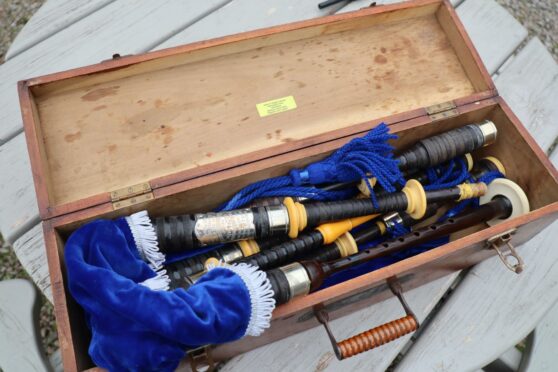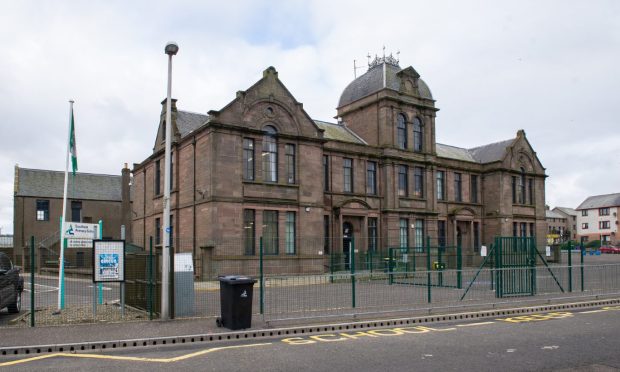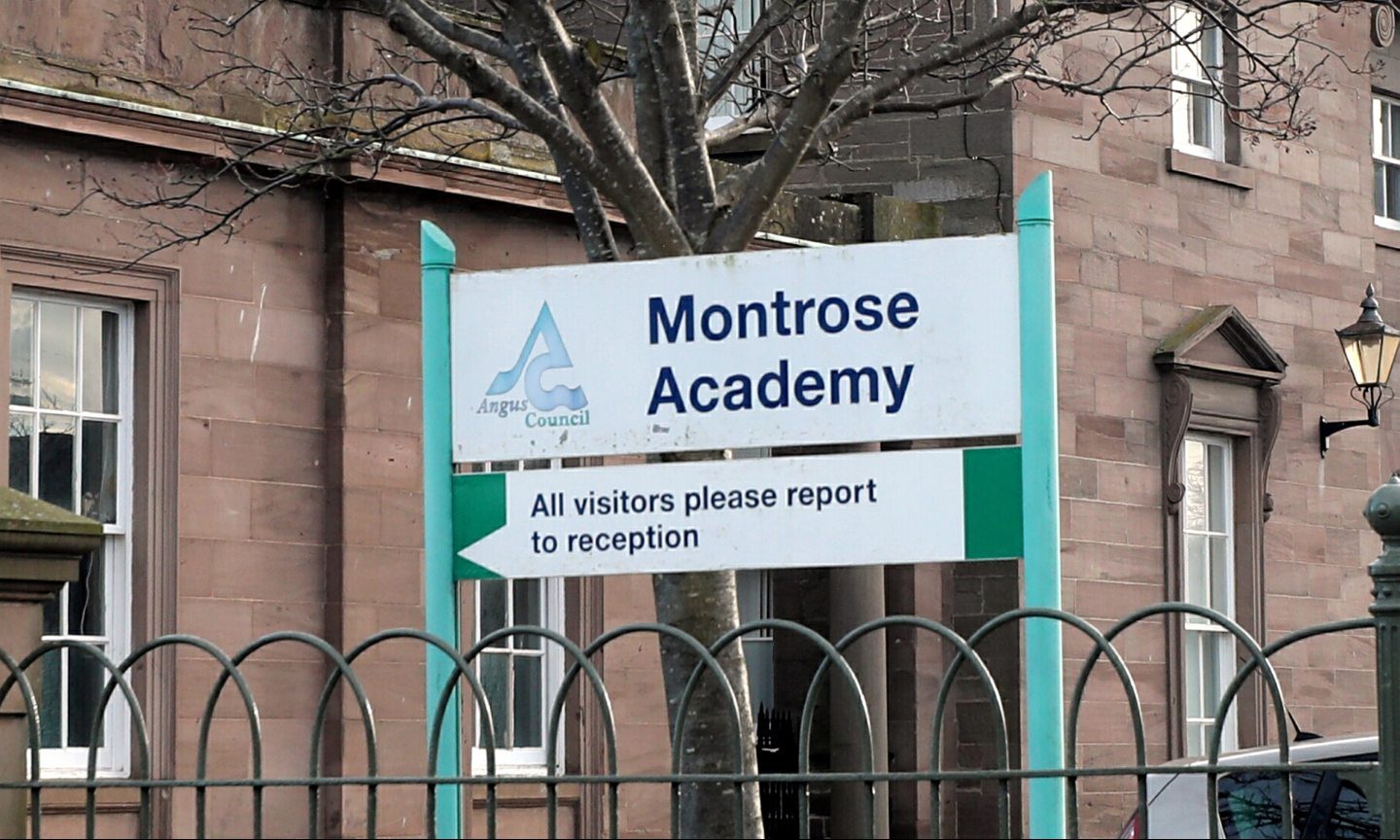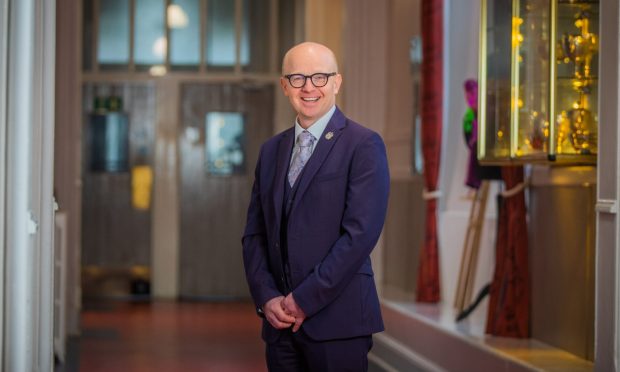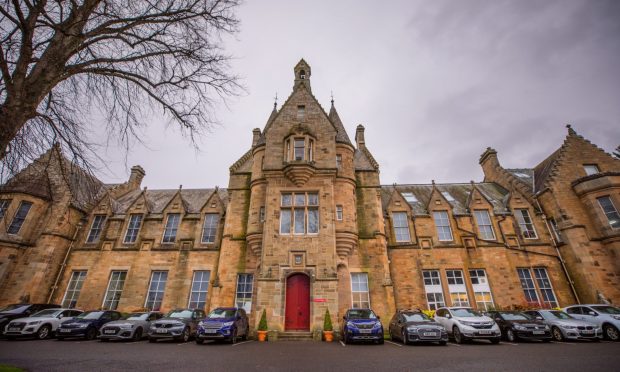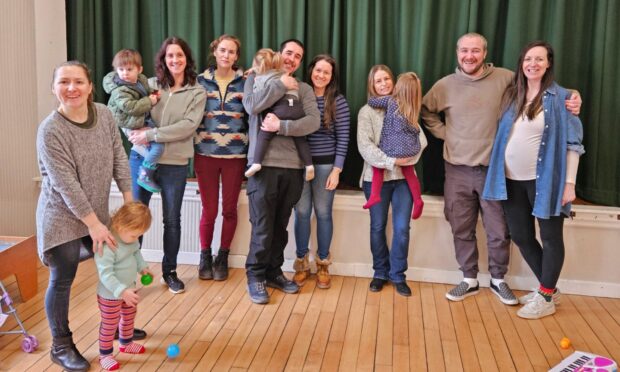A story of remarkable bravery of an Angus school’s piping instructor during the First World War has been uncovered thanks to a modern day family link.
Little was previously known by Lathallan School of Harry Stott, who led the formation of its pipe band almost 60 years ago.
Only when the school’s current information technologist Myles Beattie recently revealed he was his great nephew did the fascinating tale emerge of how Mr Stott fearlessly stepped up to lead soldiers in the Battle of Loos 106 years ago.
Mr Stott, of Johnshaven, was a piper in the 6th Battalion of the Kings Own Scottish Borderers, having enlisted at the age of 19, and was in the trenches in France on September 25 1915.
Pipers always went over the top first, playing the regimental tune to encourage the soldiers, but as he did so Pipe Major Robert MacKenzie was struck by enemy fire and fell, shot in both legs.
Highland Laddie
Mr Stott leapt up without fear for the consequences and took the pipes from him.
He struck up Highland Laddie despite fully expecting to be shot himself, often telling afterwards how he was amazed he was not.
After the war Mr Stott was given a set of bagpipes donated by the wife of Pipe Major MacKenzie.
Myles now has those very pipes at Lathallan School.
Mr Stott’s remarkable story was told to the school by Myles’ mother Joanne Beattie, a noted local researcher and author.
She said: “Harry survived the war but lost many friends and remained angry at the way the pipers were sacrificed.
“Because of his experiences he never wore a kilt again despite regularly being called on to play the pipes.”
“His legacy lives on in the many awards won by Lathallan Pipe Band and is a fitting memorial to a brave man.”
Joanne Beattie
She understands the idea of forming a school pipe band was born when the then headmaster heard Mr Stott play on Remembrance Sunday, and every Thursday for the rest of his life Mr Stott went to the school, without payment, to teach the instrument.
He died in 1972 but Mrs Beattie said: “His legacy lives on in the many awards won by Lathallan Pipe Band and is a fitting memorial to a brave man.”
The pipes gifted to him are reckoned to be a well-made set of early Peter Henderson bagpipes possibly made in the late 1800s.
Current Lathallan School piping instructor John Nevan said: “Apart from their value as an antique set of Hendersons, they seem pretty bog standard.
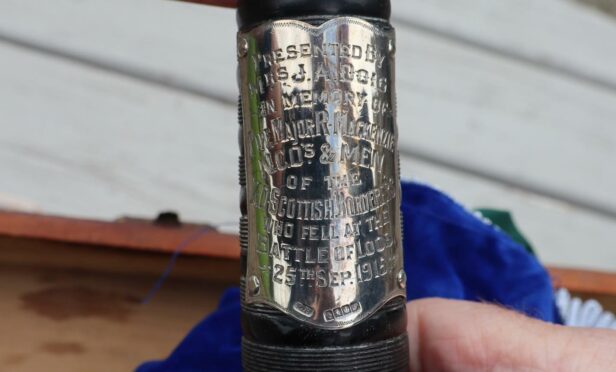
“It is only when you pay attention to the commemorative plaque mounted on the bass stock does the history of this set of pipes fan into a flame.”
Lathallan School Pipe Band is still going strong and led a Remembrance Sunday parade yesterday.
Headmaster Richard Toley said: “Lathallan School recognises Mr Stott’s gallantry during the war and his unwavering commitment to the development of pipes through the Lathallan School Pipe Band.
“The school will preserve the memory of Piper Harry Stott within its annals and records.”

